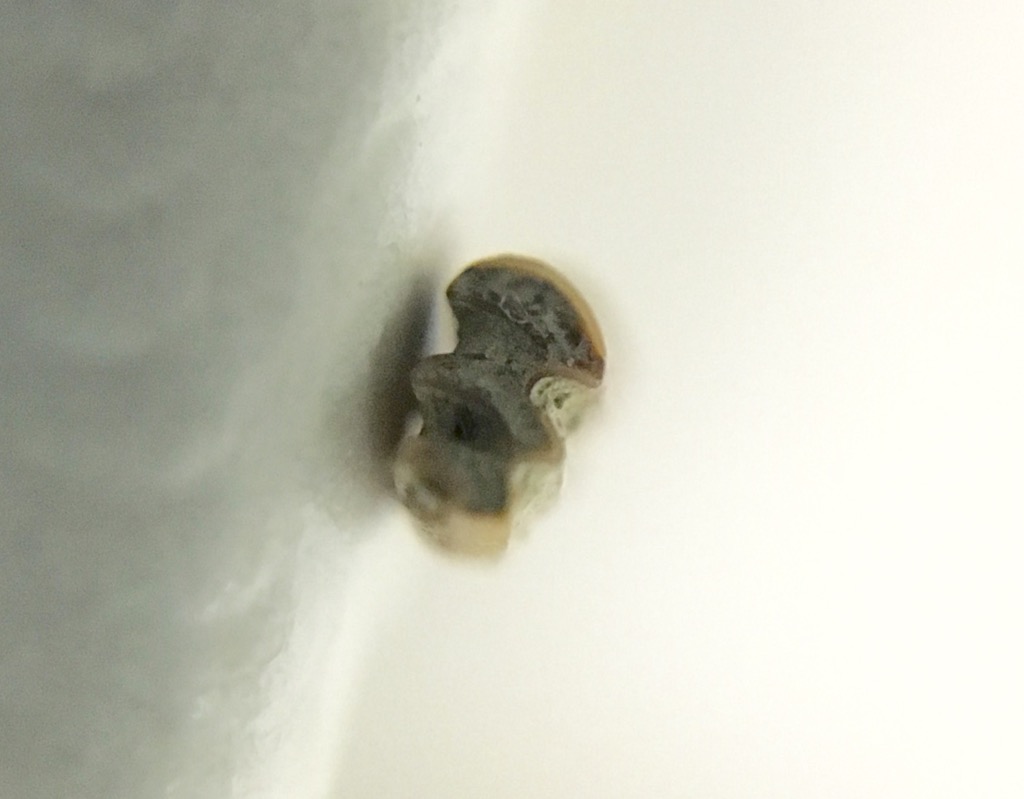 The rodent family Cricetidae is a diverse group that includes animals such as muskrats, pack rats, and hamsters. That diversity is reflected in the Diamond Valley Lake deposits, which contain several different cricetids including one of the most common members of the family, the voles.Voles are small rodents that look vaguely similar to house mice (which are an invasive species in North America and belong to an entirely different family). Below is an example of a meadow vole, Microtus pennsylvanicus, which is found in northern and eastern North America (this one is from Virginia; the small white objects are blowfly eggs):
The rodent family Cricetidae is a diverse group that includes animals such as muskrats, pack rats, and hamsters. That diversity is reflected in the Diamond Valley Lake deposits, which contain several different cricetids including one of the most common members of the family, the voles.Voles are small rodents that look vaguely similar to house mice (which are an invasive species in North America and belong to an entirely different family). Below is an example of a meadow vole, Microtus pennsylvanicus, which is found in northern and eastern North America (this one is from Virginia; the small white objects are blowfly eggs): As with so many mammals, the most commonly preserved fossil remains of voles are their teeth. At the top of the page is a right lower third molar in labial view; the entire tooth is about 3 mm tall. Below is the lingual view of the same tooth:
As with so many mammals, the most commonly preserved fossil remains of voles are their teeth. At the top of the page is a right lower third molar in labial view; the entire tooth is about 3 mm tall. Below is the lingual view of the same tooth: The series of ridges on the side of the tooth are expressed on the occlusal surface as complex loops of enamel. Below is the occlusal view (sorry for the focus, I'm experimenting with a new macro lens for my iPhone):
The series of ridges on the side of the tooth are expressed on the occlusal surface as complex loops of enamel. Below is the occlusal view (sorry for the focus, I'm experimenting with a new macro lens for my iPhone): This pattern of alternating ridges of enamel with areas of dentin serves to keep the tooth sharp as it wears down, and versions of this have evolved independently in almost every group of mammalian herbivores, from rodents to elephants. It's especially common in groups that feed on highly abrasive plants such as grasses, which are in fact the preferred food of voles.The DVL tooth probably comes from Microtus californicus, a species that it still widespread in California except in very arid regions. While probably not as common as the fellow cricetid Neotoma, voles are still a significant component of the DVL fauna.
This pattern of alternating ridges of enamel with areas of dentin serves to keep the tooth sharp as it wears down, and versions of this have evolved independently in almost every group of mammalian herbivores, from rodents to elephants. It's especially common in groups that feed on highly abrasive plants such as grasses, which are in fact the preferred food of voles.The DVL tooth probably comes from Microtus californicus, a species that it still widespread in California except in very arid regions. While probably not as common as the fellow cricetid Neotoma, voles are still a significant component of the DVL fauna.
